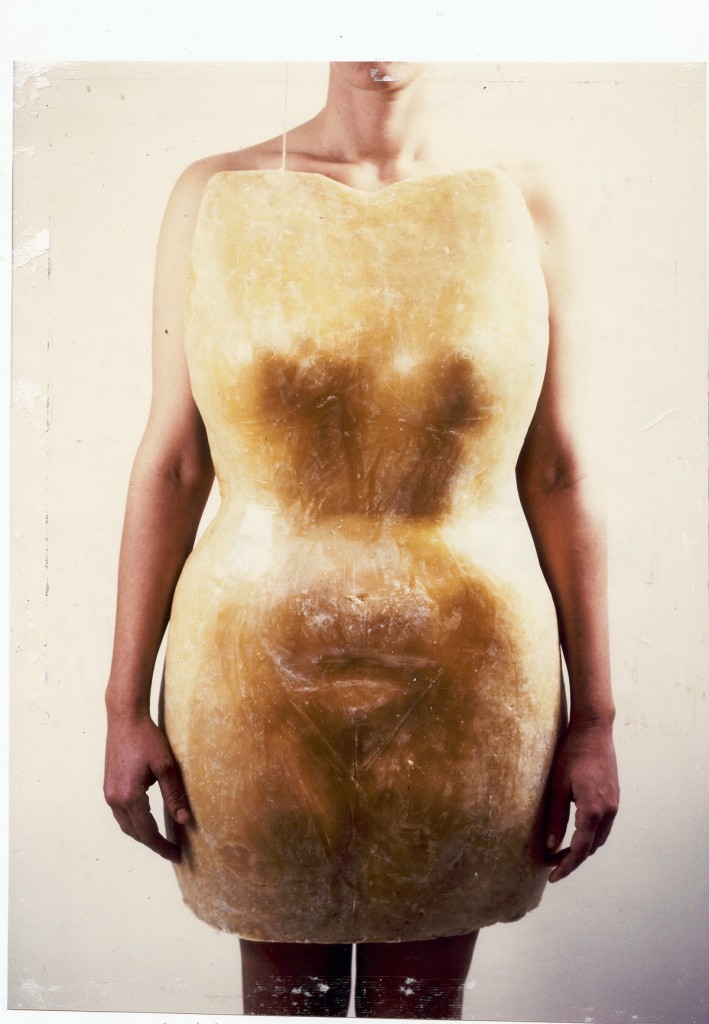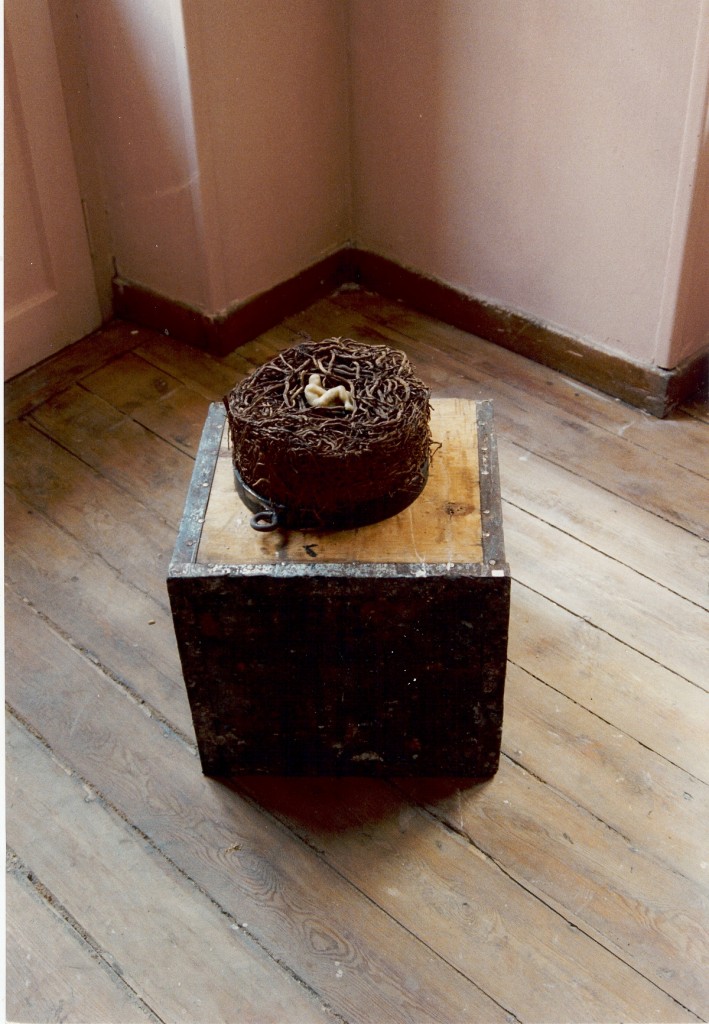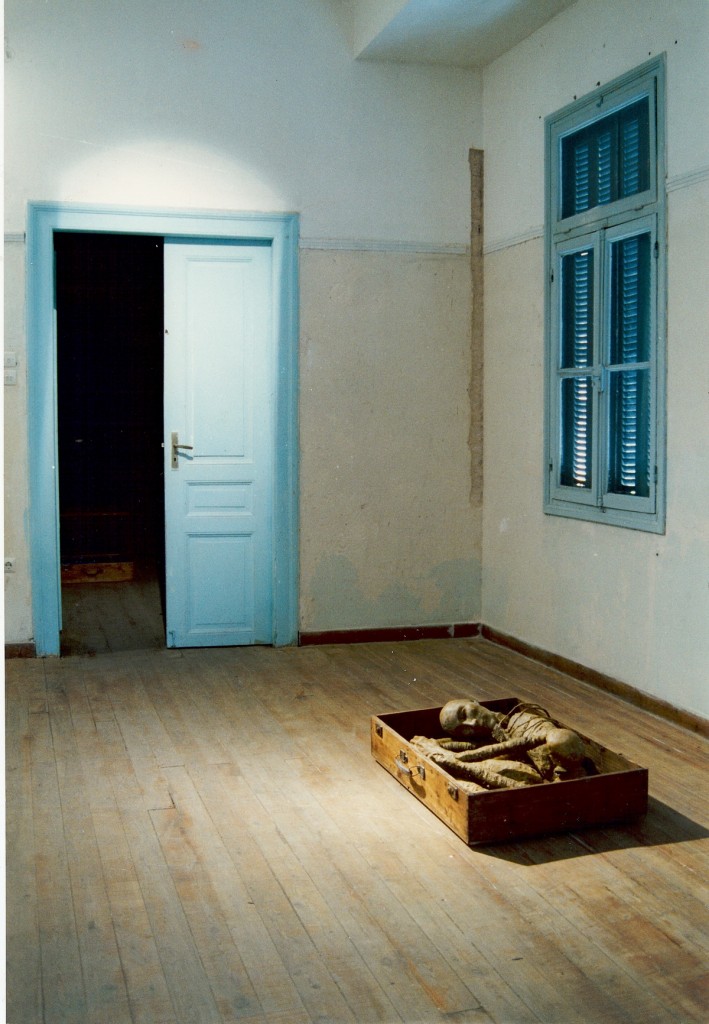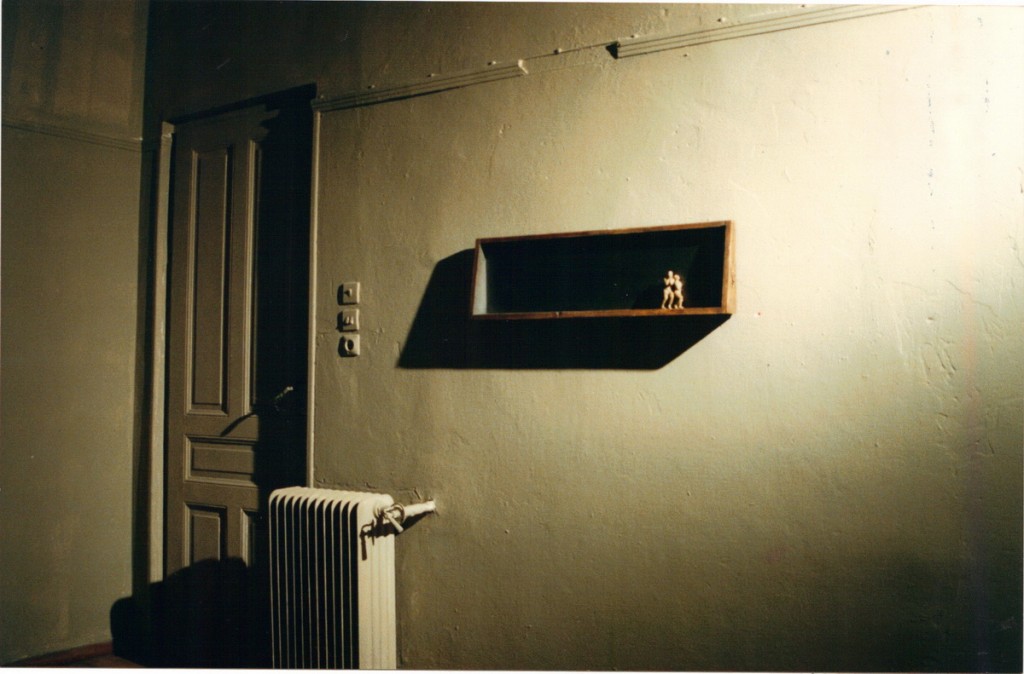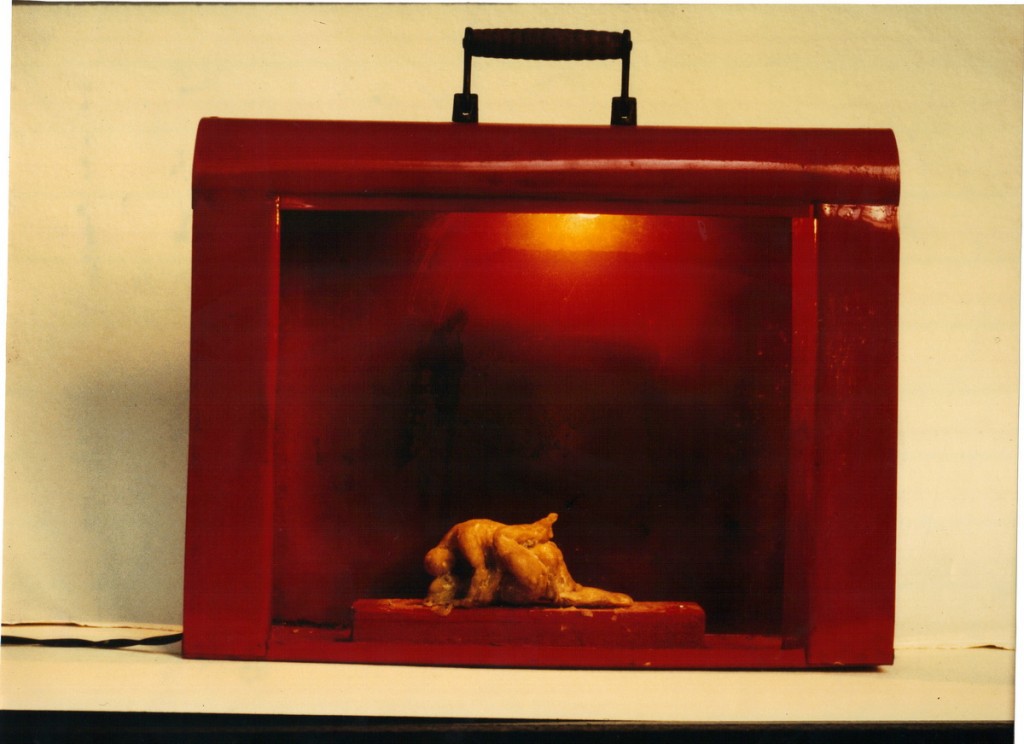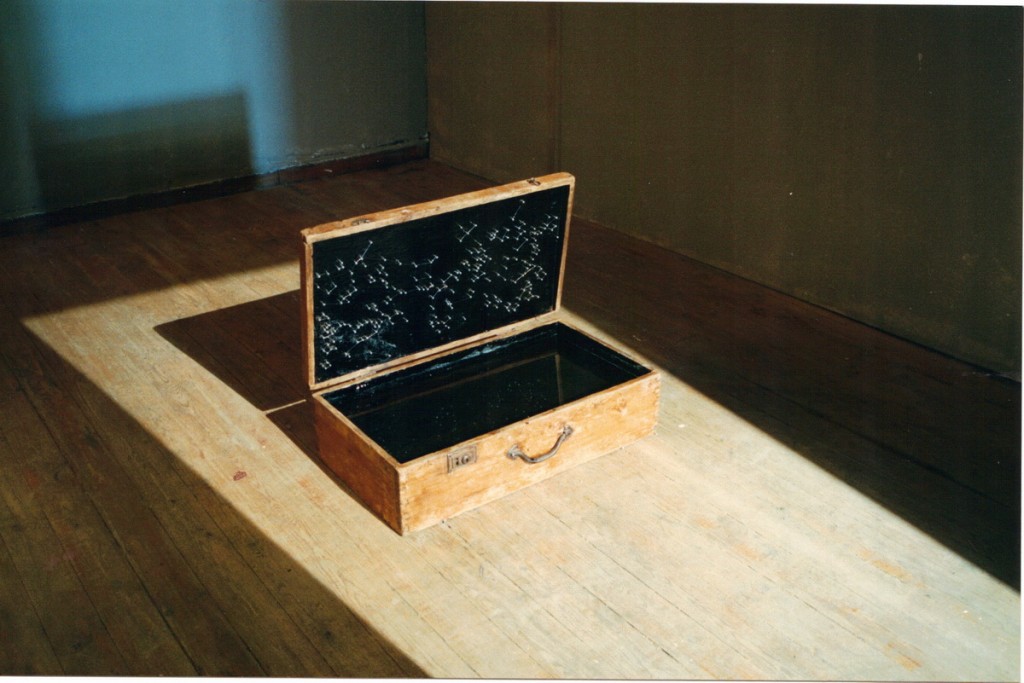Messimvrini, 26/5/93
Olga Bati
The work of Lina Bebi could be described as a visual game without end. Based on this game, one might describe her as an artist of the unpredictable, but one would soon discover that this unpredictable or random element found in her wax effigies, her dolls and her human skeletons is only an expression of one’s own dreams. It is a reference to certain moments from the past, to some unique childhood memories from a time when the distinction between myth and reality was quite vague.
Lina Bebi plays her own fetishist game rather well. She plays with human bodies made of wax, a material that melts and leads to expressive distortions; with skeletons painted on canvas; with dolls which experience their own nightmare within a painting made of graphite and wood; with Pandora’s boxes which let out all the negative-charged powers of the mind; finally, with sculptures and colours which embody the illusions of a special world — a world in which an artist lives and illustrates his memories.
This game of Bebi’s may be hard. Her figures that move within a box-shaped, specially processed environment may generate some mental discomfort, creating those magnetic fields in which positive and negative memories and thoughts meet, but her work is certainly interesting. It is a work which results from a special process of the imagination as it seeks references within the myth of things. At the same time the artist makes no attempt to transcend the earthly aspect of these things through her ephemeral materials such as wax and reach other spheres such as that of metaphysics. Of course, this is Bebi’s first individual exhibition.
What is certain is that her presence at the “Medusa + 1” gallery indicates an original work. It is an independent work that employs its own idols, the fragments of a perishable world which is rendered visually provocative through the spontaneity of the ‘game’. But what or whom can it challenge? Well, it might be the artist herself and her endurance over time. And it appears that Bebi is willing to assume the risk of such a challenge.
Haris Kambouridis
Bebi's works seem toys or teaching material for some lesson in Metaphysics. Waxen human bodies sway, like funambulists they vacillate, or pose, or stand in ranks pierced, as did the wooden football players of our youth. Waxwork solid in its final form, desperately delicate if the mercury climbs up. Almost old fashioned trinkets belonging to a different order of things. In one of Lina Bebi's waxen works we see the most enduring part of the human body, the bones. In her earlier works, oil paintings on canvas, a female figure is seen, a figure often so chiseled, as if she barely survived the finishing strokes of the artist. In some works the figure scarcely emerges from a liquid, or appears disinterred by a meticulous archaeologist. While something like a box, a sarcophagus, is always surrounding the female figure. The eternal theme of the painter is therefore time and decay. But who and at which precise anticipated moment will open the boxes, that encircle the stage of creation of the artist?
Lina Bebi explores the memory’s limits of resistance and above all the importance of the body, as a vehicle of this memory. In her studio she amasses old commemorative photographs of people unidentified and unknown. But the way these people look at the camera, discloses the way they relate to the future, to the eye that will one day attempt to blow life into their photographic body. A recent work depicts constellations on a box lid, while the dark liquid at the bottom reflects stars. The artist moves here deeper into a symbolical search for points of reference more enduring than the body. In another work, the minuscule waxen figure, the leitmotiv of Bebi's art, sleeps peacefully on entwined real roots. A symbol of rebirth?
For a while we forget the works of art and we recall one or two things we know about time. A human psychological need - it is said - apparently objective; objective only because it combines with periodic phenomena of our anthropocentric surroundings? Time exists from the moment man noticed the rotation of the sun, the interchange of seasons, of life itself. For all natural dimensions measurement instruments were invented. But when it comes to life, art only has proven to be a creditable instrument, capable of simultaneous measurement of physical and psychological dimensions; a deserving way to register all we feel, when we for sure know we are moribund, trapped in our knowledge. Our bodies and our ages, are the time's indication of this relationship and the way we depict it at times, is the unfaltering testimony of the idea we make of human fate. This is the box we open and reopen, resurrecting idealized or realistic interpretations of our bodies. In all the artist's works the onlooker will acknowledge a permanently wondering and increasingly pondering disposition, even when tinted with a bit of sarcasm. From a morphoplastic point, her works are well defined and unadorned. Their ideological conception brings us into contact with themes almost forgotten by contemporary art, but familiar to older eras. As microsculpture on a medieval Gothic temple. In one of the works we face Adam and Eve leaving Eden in guilt, alone and lonely in a dark coloured void. A biblical theme epigrammatically formulating the inborn syndrome of the human being in modern western civilization: the man who lives in usurpated time, instead of living into the eternal time of the paradise of blissful ignorance of one's fate. "I studied Philosophy, Medicine, alas Theology too and yet here am I, with all this knowledge, no more wise than before", just to cite Faust, who in deep melancholy addresses Mephistopheles, in his attempt to gain time.
It is Lina Bebi's first personal exhibition; perhaps too soon for predictions. Yet her thematic audacity, her scrutinizing analytical disposition, the way she masters her expressive means, speak of a creator, who rightly claims her own special place in art.


